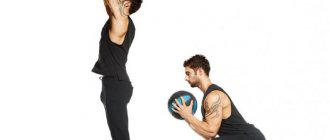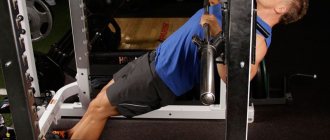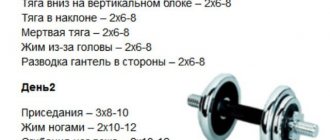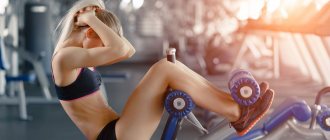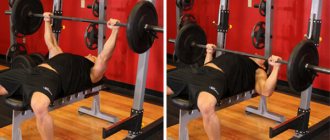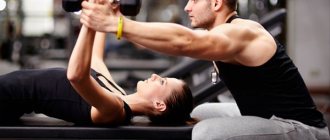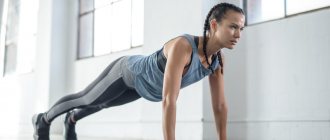All runners strive to reach the next level of their performance.
Do you want to significantly improve your running? Include Special Running Exercises in your training!
Running involves many muscles. Not only to ensure that these muscles receive physical exercise, but also to form the correct movement pattern, runners and triathletes need to include running exercises in their training.
Running exercises imitate the work of running. Therefore, they will allow you to simulate the individual phases of running footwork, as well as arm technique.
By systematically performing running exercises, athletes improve running technique, coordination, and strengthen ligaments and muscles.
Specific running exercises are very important in preparing a runner. Used for three purposes:
- As a warm-up.
- As a means of correcting and improving running technique.
- To develop strength endurance.
The best thing to do is to develop the habit of including SBU in your warm-up.
SBU is precisely a set of exercises, so you always perform at least 4 different types of exercises. The rest depends on the goal and preparedness of the performing athlete.
The number of repetitions varies from 1 to 5. The distance for warm-up is from 40 to 60 m, for training – 60 -100 m.
It is important to perform all exercises clearly, slowly, with an understanding of what is happening, and controlling your movements. This is necessary for proper learning of the technique at the muscle memory level.
How to perform SBU correctly?
The “Mincing Run” exercise is aimed at improving the skill of planting the leg from the front of the foot. During execution, the upper body is completely relaxed, arms are lowered, back is straight. Emphasis on landing from the front of the foot with the heel pressing into the surface.
Features of walking at home
In conditions where we find ourselves in quarantine or at home, we can still continue to walk. And even develop a recommended norm of 10,000 steps. You just need to change the type of walking a little.
Firstly, we can raise our knees high while moving around the apartment. Secondly, we can spring a little and squat, as a result of which both the hip and ankle joints bend. Normal walking is optimized and the joints work in an energy-saving mode. And ideally we need to spend energy. Therefore, effective walking at home would be an option when we sit down at every step and can walk out on our tiptoes. We can walk this way not quickly, as many people think, but slowly. And in this case, the efficiency of walking around the house will be such that 5,000 steps taken using this method will be equivalent to 10,000 steps of a standard walk.
Question answer
How much should you walk a day? You can also use options such as Marcel Marceau walking or slow running at home. This is both running and walking, when a person seems to stand still, but at the same time walks. This technique is quite complex. We usually quickly place the heel, but here slowly, when there are already a couple of millimeters left to the surface, we hold it back a little. This is walking with a delay. We gently bend the joints in our legs. In fact, this is a plastic pantomime, and this technique is wonderful because even on one meter of surface we, without budging, walk or run. It’s like running in a dream.
Of course, here you should understand that when walking at home like this, you need to be more careful with your hands, because if you swing them too far to the sides, you can break something. But hands are not paramount here, so they don’t need to be involved.
Special running exercises. Types of SBU. Execution technique.
A set of special running exercises will help correct inaccurate movements or running technique. When performing intense exercises, almost all muscles are involved, and accordingly, the power of the whole body increases.
Running involves many muscles that perform different functions. In order for the muscles not only to receive physical activity, but also to form the correct structure of movements, special running exercises (SBU) were developed. This is a set of running exercises aimed at developing strength, power and coordination of all leg muscles involved in running. Specific running exercises will enhance the specific physical and technical fitness required for running. Each of these exercises is a separate accented element of running.
SBU is precisely a set of exercises, so you always perform at least 5 exercises in a series. Experienced coaches include the SBU complex in every warm-up. The length of the segment for performing SBU depends on the purpose of the exercise and the preparedness of the performer. For a special warm-up – from 20-40m; for training – 60-70m. The number of repetitions is from 1 to 6 times.
Don't miss: Physical Fitness for Runners: 30 Bodyweight Exercises
Why perform SBU
Special running exercises are used for three purposes:
1. As part of a warm-up, to activate and warm up target muscle groups. The length and intensity of the exercises will be small (20-40 m; 1-2 series).
2. As a means of correcting running technique. Obviously, it is extremely important for beginners to perform SBUs in every workout. Correction of physical deficiencies in running technique should take place while the body is fresh and adequately responds to a small load (40-50 m; 2-3 series).
3. As a means of special physical training for a runner. For example, the “deer run” exercise is often used as the main block in training, and is performed in repetitions of 8 to 12 times at maximum intensity, lasting from 60 to 100 m. This type of training is used by trained athletes to develop strength endurance.
Exercises
1. Jumps with step setting or “spring”
Execution technique: reminiscent of jumping rope, but with forward movement. The push-off occurs from the forefoot, not the heel. After pushing off, bend your thigh slightly at the knee joint and lift it up a little. Landing occurs practically on two legs at the same time: first on the pushing leg, and then actively on the swing leg. The movement is short – half a foot.
Objective: The main emphasis is on the muscles and ligaments of the ankle joint that produce push-off.
Frequent mistakes: weak push-off, wide strides, arms bent at the elbows.
2. Running with high hips
Execution technique: when pushing off with the supporting leg, you need to raise the thigh of the swing leg high. High frequency hip lift. Stand high on your feet without dropping onto your heel. When landing, the leg is firmly placed on the support. The emphasis in the exercise should be on removing the leg from the support, and not on placing it. In this exercise, the torso takes a vertical position, but the center of gravity must be transferred to the shoulders. The arms are bent at the elbows, working in the same way as when running.
Objective: impact on the muscles of the anterior thigh, feet, hip flexor muscles, improving intermuscular coordination.
Common mistakes: shoulders pulled back, resulting in the back being tilted away from a vertical position, thigh not parallel to the ground, incorrect use of the arms, failure when landing.
3. Running with shin overlapping
Execution technique: elastic running, alternately bend your legs at the knee joint, throw your shin back to your buttock. The torso is slightly tilted forward, the arms work in the same way as when running.
Task: warming up the knee joint and the muscles of the back of the thigh.
Frequent mistakes: lack of elasticity when placing the foot on the surface, excessive torso tilt forward, hip movement forward when folding the leg, arms not bent at the elbow.
4. Heel-to-toe roll
Technique: soft roll from heel to toe followed by hard pushing. The landing is soft. Starting from the heel, a force is made through the big toe, followed by pushing forward and up, after which the landing is again on the pushing leg and then a symmetrical action with the other leg. The torso takes a vertical position during the exercise. Relax your arms and maintain balance only through slight rotations in your shoulders.
Task: to work the muscles involved in pushing.
Common mistakes: Bend your knee too much when landing.
5. Multi-leaps or “deer running”
Technique: mix of jumping and running. Trainers recommend imagining an obstacle in front of you, for example, a wide puddle, over which you need to jump with one leg, while bending the knee. The second leg is always straight.
When pushing off, the pushing leg is fully straightened, while the swing leg, bent at the knee joint, is sharply carried forward. When landing, the foot is planted with an active raking movement using the entire foot. The arms work in opposite directions, with a very wide swing: this is how balance is maintained. The torso is in a slightly forward position.
Objective: development of the muscles of the back of the thigh and calf muscles, as well as the levator ligaments of the thigh. Multi-jumps are often used in the jumping training of athletes and serve as a good means of developing strength endurance.
Frequent mistakes: the back leg is bent, due to which there is a jump along the trajectory of a semicircle, a weak push forward, a short and not intense step. This is the most difficult exercise for beginners, because... due to the unpreparedness of the muscles and ligaments, it is difficult to make a sharp swing of the knee forward and upward, while keeping the other leg straight.
6. Running on straight legs
Execution technique: active, quick extension of the swing leg, at approximately an angle of 45°. The knee is straight. The foot must actively meet the support in order to push the body forward. The torso is in an almost vertical position, the arms do active work, as in running.
Objective: development of the calf muscles, levator ligaments, as well as the muscles responsible for adducting and abducting the hips.
Frequent mistakes: strong deviation of the body back, bent legs, marking time without moving forward.
7. Cross step
Execution technique: performed both right and left side. The exercise is performed on a high foot. Step with your right to the right side, and then step with your left back behind your right leg. After this, again step with the right to the right, and then step with the left but forward with the right foot. It is performed with alternating twisting of the torso in the pelvic area. During the cross step, the arms are raised to the sides to shoulder level.
Objective: developing mobility in the hip joint, strengthening the muscles of the foot and muscle groups that adduct and abduct the hip.
Common mistakes: insufficient rotation of the pelvis.
8. Added steps
Execution technique: movement occurs sideways in a straight line, avoiding changing trajectory. An active push of the foot up and at the same time to the side, while spreading the hips wide. The result is a wide lateral step. The hands work alternately, meeting and diverging in front of the chest. Performed both right and left side.
Objective: active work of the ankle joint ligaments, development of the adductor and abductor muscles of the thigh.
Common mistakes: moving along a curved line (miscoordination), weak push-off with the foot.
9. Pushing
Execution technique: slightly reminiscent of the “spring” exercise, but the process of pushing out with each step is much stronger. High hip extension during take-off. The pushing leg is straight. The swing leg moves up along the pushing leg. Maximum long hover in the air.
Objective: development of foot ligaments and technique of pushing off the surface. Development of coordination.
Common mistakes: swaying of the body when hanging in the air, weak repulsion, too soft landing and at the same time bending the knee of the supporting leg too much.
How to do SBU correctly
Special running exercises (SBU) are very active, intense movements with high amplitude; accordingly, it is important to warm up well. Warm-up jogging (at least 10 minutes) and then a set of stretching exercises. SBU is performed on a flat surface: stadium paths, lawns, dirt paths in the park. If possible, avoid asphalt and concrete surfaces, as this puts a lot of stress on the joints. Don't rush your movements. The main thing here is the amplitude and coordination of movements, and not the speed of performing each action.
Don't forget to jog for 10 minutes and stretch for 5-10 minutes.
The exercises given are basic. There are many more focused exercises that suit a specific sport or distance.
The essence and basic principles of exercises
Why you need to warm up before every run:
- The work of the lungs and heart accelerates, which allows you to rebuild the body’s activity for further stress.
- Metabolism in the body accelerates, ensuring the flow of necessary hormones into the blood.
- The rate of breakdown of chemicals increases, giving the body energy for muscle contraction.
- Muscles and tendons become toned, joints are strengthened, thereby reducing the risk of injury.
- Warming up prevents acidification in the muscle fibers, which reduces the likelihood of muscle clogging.
Warm-up before running for beginners usually takes 15-20 minutes, this time is enough to adjust breathing, warm up all the muscles and comprehensively prepare the body for a run.
If you lack time, it is better to reduce the number of exercises and shorten the warm-up to 5-8 minutes, but you should not completely neglect the warm-up before jogging, so as not to increase the risk of sprains, tears and fractures.
The warm-up should begin with the upper parts of the body and end with the lower parts. It is best to first do general warm-up exercises in order to prepare the body for the load, and then running exercises in order to warm up the muscles and ligaments of the legs. All general warm-up exercises are done with a straight back and feet shoulder-width apart.
Warm-up before running for beginners includes exercises for all muscle groups involved in jogging , it is necessary to warm up not only the legs, but also the muscles of the arms, pelvis, back and neck, this will allow you to fully warm up the body and protect it as much as possible from possible injuries: the better warm-up, the safer and more effective the workout.
Walk always, walk everywhere
During a telephone conversation or conversation with family, it is not necessary to sit on the sofa. Stand up and walk at a relaxed pace. In 10–15 minutes you can easily walk a couple of thousand steps and won’t even notice fatigue.
While waiting for the kettle to boil, make a couple of circles around the kitchen, wake up, march for 1-2 minutes and only then get down to business. When thinking about something, walk: it has been proven that with constant rhythmic movement, fresh ideas come faster.
What is a step platform?
The most interesting thing is that this trend in fitness appeared less than 30 years ago. Trainer Jean Miller injured her leg and during rehabilitation came up with a set of exercises that simulated going up and down stairs. The founder of step aerobics then used a plastic bottle box as a “step”. Reebok picked up the idea of her homemade sports equipment and began producing special platforms that quickly conquered the sports market.
The first plastic step boards had a number of disadvantages: they often broke, had poor shock absorption, were unstable, and had the same height. Modern models are significantly better than their predecessors in the following indicators:
- Withstands any weight due to durable material.
- Softens the load on joints during intense steps and jumps.
- They have an anti-slip coating on the legs and on the “working” surface.
- They have very diverse parameters: width – 24-40 cm, length – 60-120 cm, adjustable height – from 10 to 30 cm.
The step bench has different heights specifically for each level of users. Beginners are advised to choose a board height of 10-15 cm; more experienced athletes practice on platforms with a height of 20 cm. Such equipment has several adjustment levels of 5 cm each. Due to this, the increase in stress on the body when exercising on the steppe will not be so noticeable.
Types of platforms
In addition to differences in height and length, step platforms also differ in type of construction:
- Non-adjustable one-piece structures whose height cannot be changed. These are already outdated models that are hardly sold anymore. It is most suitable for beginners.
- Adjustable platforms with additional supports that can be used to reduce or increase the height in the range of 10-30 cm. These are universal models that can be used by all steppers.
- Combined multifunctional models, which are additionally equipped with expanders, benches, and niches for storing things. There are also combined platforms that can be transformed into other sports equipment.
Inventory purpose
Exercises on the step platform are performed, in most cases, with the feet. Therefore, during training, first of all, the hips, shins, and calves are pumped. It also tightens your buttocks and strengthens your back.
A step bench is a versatile piece of equipment because there are many ways to use it, not just as a support for your feet when jumping or walking. The step platform can be used for push-ups, plank support, and any dynamic workout that will help strengthen the muscles of the entire body and burn calories.
